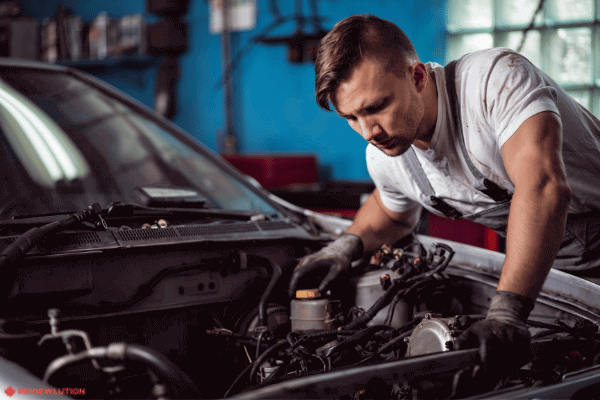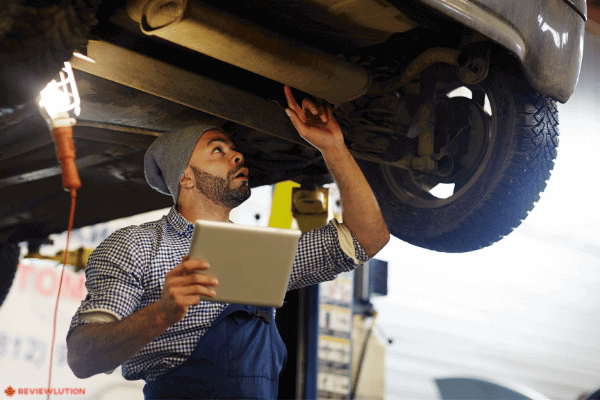How Much Does a Car Inspection Cost?
Owning a vehicle in Canada is not as simple as getting a driver’s license and buying a car. There are more components to car ownership, and one of those is taking your vehicle for a regular maintenance checkup—also known as a car inspection.
Car inspection is an important part of safe driving and serves to detect any weakness or fault in some of the car’s parts.
To find out the car inspection cost and more, keep on reading.
How Much Does a Car Inspection Cost in Canada?
On average, the cost to inspect your car in Canada is around $100. However, the price tends to vary by province. Additionally, the cost of a car inspection will highly depend on the service you choose—different services have different fee policies in place.
Moreover, when determining the cost of a vehicle inspection, one factor is whether the car is imported to Canada or if it’s a salvage car. Each of these added circumstances will affect the total price of the safety inspection.
Take a look at the approximate prices in some of the provinces:
- Ontario: ~ $120
- Manitoba: ~ $100–$200
- Alberta: ~ $99
- British Columbia: ~ $130–$200
- Quebec: ~ $80
- New Brunswick: ~ $35–$45
- Newfoundland and Labrador: ~ $69.95
Note that these are only estimates. Some of this data changes frequently, so you should check the services in your province.
Why Do You Need a Car Inspection?
Let’s start with the fact that most road accidents happen due to collisions. Besides having irresponsible drivers behind the wheel, some other elements may come into play—notably, vehicle malfunctions.
This is why regular maintenance is a must.
To drive a car in Canada, the vehicle must pass the inspection test, after which you obtain a safety certificate.
What Are the Main Reasons to Get a Car Inspection?
Below, we have outlined the three most important reasons why you should take your car for regular checkups.
Regulatory requirements
To kick things off, it’s important to mention that regulations regarding car safety testing tend to vary throughout Canadian provinces. Therefore, it’s best to check the local vehicle safety inspection guidelines for the exact information applicable to your case.
It’s important to highlight that regulations regarding safety standard inspection vary across Canada. If we look at the inspection regulations in Ontario, Manitoba, Newfoundland and Labrador, you can register a car only if your vehicle has successfully passed the safety test.
While some provinces require yearly vehicle inspections, others may have enacted a law requiring safety inspections every two years. On the other hand, certain provinces like Alberta have somewhat more relaxed regulations—you don’t need an inspection test to register a vehicle.
But when it comes to imported cars, a vehicle must be tested for safety to be registered. Another reason to get your car for a safety inspection is for insurance purposes. To get insurance coverage on your car, the vehicle must fit the safety standards and guidelines.
Detecting technical issues
Regardless if you drive your car occasionally or to your everyday commute, technical problems at any time. Not only that—your car can fail you just when you’re about to drive and in a rush. But even more so, it can be pretty dangerous when you’re on the road driving a vehicle with technical issues. Not only can it leave you in the middle of nowhere, but it can cause an auto collision.
It was shown that vehicles with technical problems are bound to cause more accidents on the road than any other reason besides drunk driving. Therefore, a technical check-up is necessary to ensure that all parts of the system function properly.
This is especially important for uber drivers since they’re on the road driving different people most of the time. Therefore, the risk of an accident is even higher, putting all the passengers at a higher risk of injuries. So, detecting any technical issues on time prevents unwanted events and lets drivers have peace of mind knowing that their vehicle is safe to drive.
Emission tests
In light of the most recent developments with climate change, many provinces have stepped ahead and enacted laws to prevent emission pollution in the air. Thus, cars that pose a danger to air pollution and climate change are prohibited from use, or car owners must pay hefty taxes.
Emission tests apply to all commercial vehicles as well, not only to passenger cars. There are many emission test services across Canada, so it’s easily accessible to drivers.
What Does a General Car Inspection Include?
It’s essential to find a licensed mechanic who will conduct a proper inspection and has adequate knowledge to detect any damage.
The car mechanic will go through the following parts of the vehicle:
- Brakes—Breaks are an essential part of driving a car. If this part isn’t functioning properly, you can’t stop in a timely manner which can cause all sorts of accidents. All vehicles, whether transported or bought in the province where you live, require break checks.
- Emission—The emission system will show if the vehicle’s engine runs without producing excessive emissions.
- Transmission system—The role of the transmission system is to power the wheels. It requires a detailed checkup on the clutch and seals, the planetary gear sets, modulators and regulators.
- Suspension system—A standard suspension checkup involves checking the tires, struts, shock absorbers and any other part that may show some irregularities.
- Steering system—Mechanics will typically check out the gearbox, steering arm and pump, and the steering fluid.
- Exhaust system—It’s a crucial part of the inspection process because the system is linked to the amount of emission through exhaust gases, and therefore, it needs to be properly placed. The exhaust system is typically positioned away from the car’s cabin and gasses are emitted through pipes.
- Engine and its cooling system—The cooling system needs to work properly to prevent the engine from overheating. Another key function of the cooling system is powering the heating, conditioning, and defrosting.
- Hoses and belts—These parts are responsible for the engine’s proper functioning and the battery charging system. Therefore, require a thorough inspection.
- Car lights—Maximum visibility is crucial on the roads. The lights signal a vehicle in motion on the road, which is especially important during night drives. It’s also a way to signal to the other drivers when the driver is about to turn in either direction of the road or signal that they are about to stop.
- Electric system—This part is responsible for the function of the car’s battery since it’s the only part that needs electricity to work. Inspecting the electric system involves checking up on the car’s battery, voltage regulator, fuses, cables and alternator, among the rest.
- Tires—Having tires in good condition is extremely important for road safety. It’s also important to change the tires for the weather conditions, once the season changes from summer to winter.
A mechanic will check if the tires are worn-out by checking out the pressure via a pressure gauge. They will next check the tread depth, which is important for proper grip while driving.
One might think that the total car inspection cost—including the tire checkup—can result in higher prices for an average Canadian. While it’s fair to say that, it’s better to pay a little bit more once a year and prevent any issues or accidents than to pay for the damage caused by malfunctioning car parts. Paying for the damage often costs way more than what you would pay for the inspection.
Car Inspection for Imported Vehicles
Imported vehicles must comply with the Canadian Registrar of Imported Vehicles (RIV) regulations to be allowed on the roads. The federal government organization established RIV to ensure that only vehicles meeting the safety criteria can be imported into Canada.
Therefore, a car inspection is a must for imported vehicles. It’s the only way that owners can obtain a safety certificate, giving them the green light to register their vehicle.
According to the RIV guidelines, any imported car must be inspected within 45 days of arrival, while the timeframe for salvage cars is one year.
If you fail to do this, you not only behave against the Motor Vehicle Safety Act guidelines but also risk receiving penalties.
If you import a vehicle across the Canadian border, the Canada Border Services Agency (CBSA) will check the car’s documentation and verify if the vehicle meets the RIV regulations. You may also pay an RIV fee—online or via mail.
If you skip this part, you’ll not be able to drive the car throughout Canada, so all your efforts to import the vehicle fall into the water.
In case you’re unfamiliar with CRIV’s regulations, you can contact them and ask them to provide you with the necessary information on imported vehicles.
Car Inspection for Salvage Vehicles
A salvage vehicle is a short description of vehicles that have been previously damaged but can be repaired. Regulations for these cars are slightly different to other vehicles.
Only vehicles with damage that can be repaired are classified as salvage cars. If the repair is impossible, those vehicles are declared obsolete—no longer useable.
Such cars cannot be registered and will be dismissed. Still functioning parts will be removed from the vehicle and used for another car that needs a replacement of some of its parts.
If in doubt, you can always contact Transport Canada for clarification on the regulations and remember—you have one year to take your salvage car to the car inspection service.
Key Takeaways
The bottom line is that not only is a car inspection mandatory, but it’s also necessary for your safety and the safety of other participants in traffic. To hit the road, your car must pass the vehicle inspection—which can cost around $100—but the price can vary. It all depends on the inspection institution you choose and other factors, such as if the vehicle is being imported from another jurisdiction or if it is a salvage vehicle.
An inspection car is a safety measure that involves checking up on the essential parts of the system and must be carried out regularly.
FAQ
Getting your vehicle through a safety inspection in Ontario will cost around $100. This is, simultaneously, the average price across Canada. However, it’s not necessarily the standard.
Each Motor Vehicle Inspection Station may have a different price. Thus, the cost will vary between different entities. The variations in the car inspection price are due to car inspection in Canada not being regulated by the government.
Yes. In many provinces, a car inspection is mandatory as a part of the safety aspect of driving a vehicle. To be able to hit the road in Canada, you need to have your car inspected for safety purposes. The required checkups can be done annually or every two years, depending on the province.
A safety inspection cost in Ontario is around $120. Again, it all depends on where you choose to have your car inspected. But, to drive or sell your car, you must obtain a safety certificate, which guarantees that your vehicle is safe on the road.
A car inspection cost in BC can range between $120 and $200. The exact price depends on the model, the motto vehicle inspection station, and if the car is being imported into BC.












